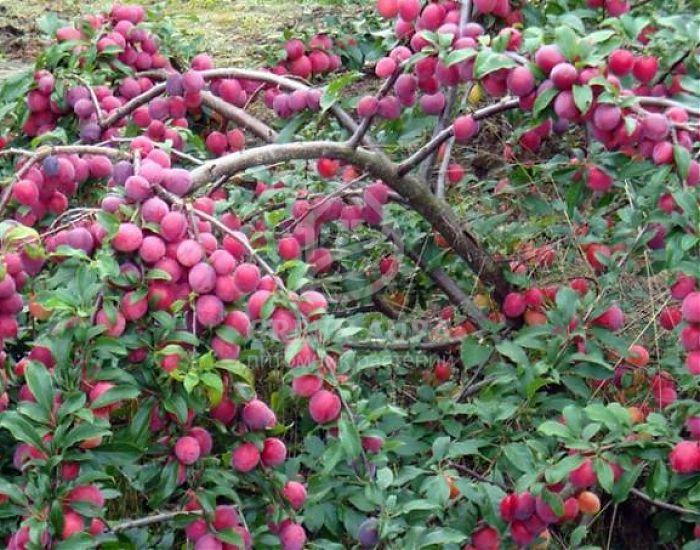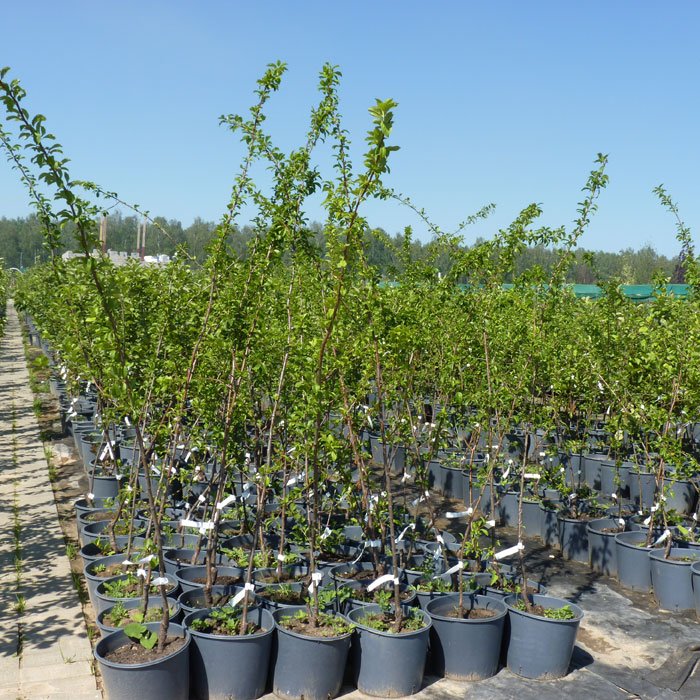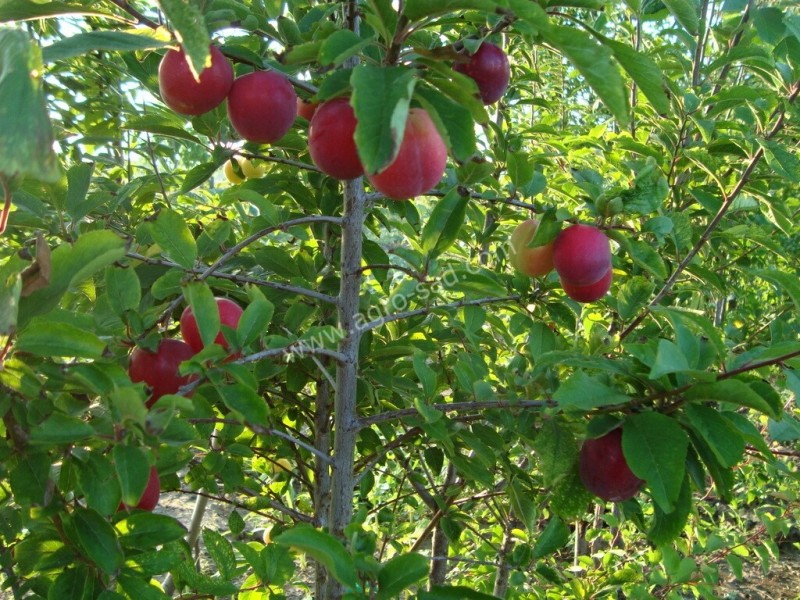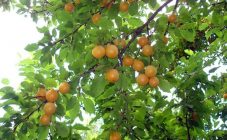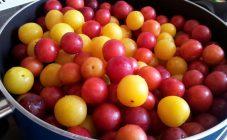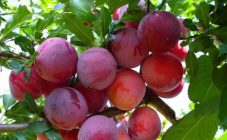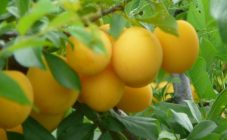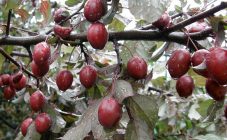Content:
The cherry plum variety Kuban comet was bred in 1977 at the Crimean experimental selection station of the All-Russian Research Institute of Plant Industry named after N.I. Vavilov. Breeders G.V. Eremina and S.N. Zabrodin crossed Skoroplodnaya plum and Pionerka cherry plum. In 1987, after state tests, the Russian cherry plum variety comet was entered into the State Register for the Central Black Earth, Northwest, North Caucasian and Lower Volga Regions.
Description of the cherry plum variety Comet
The tree is undersized, no more than three meters in height, the crown during growth is formed in a special way (without a pronounced central shoot) and looks like a shrub. This height and structure of the plant is conducive to comfortable caring for it.
Landing place
For full growth and fruiting, cherry plum should be planted in an area with sufficient lighting and heating from the sun's rays. The space can be open, the tree is not afraid of winds and drafts.
The soil
The plant is not picky about the composition of the soil. It adapts perfectly to the land, depending on the region of growth. It grows best in light, loose soil with a neutral or slightly acidic acid-base composition. Gardeners in general should avoid clay and loamy soils, in which the cherry plum Kometa will poorly develop and bear fruit.
Frost resistance
Cherry plum Kubanskaya is considered to be highly winter-resistant and can withstand cold temperatures down to -30 degrees. In the Moscow region, the winter hardiness of the plant is considered average. The buds of future flowers do not tolerate severe frosts very well, but even after being exposed to low temperatures, they are able to adapt and give a good harvest. Therefore, cherry plum tolerates sudden spring frosts.
Bloom
Cherry plum is self-fertile and does not need a pollinator. Experienced gardeners advise planting other pollinators with similar flowering periods next to it to improve fertility.
The cherry plum has a rich flowering, the tree begins to bloom early, at the end of April, the harvest can be carried out from the end of July to August.
Fruit
The cherry plum variety Kuban comet has large fruits - up to 30-45 grams, rounded, with a slightly pointed tip, covered with dense but thin skin. The color of ripening fruits is yellow-red, ripe - burgundy. The pulp is juicy, yellowish-reddish, with medium density and sugar content, fibrous in consistency. The taste can be described as sour-sweet and apricot-like. The seeds are small but very difficult to separate from the pulp. Overripe fruits may not crumble for a long time, not crack. If it is premature to collect slightly unripe fruits, then over time they will ripen to maturity. This method is ideal for transporting crops.
The collected fruits of cherry plum variety Kubanskaya are stored in the refrigerator for up to three weeks.
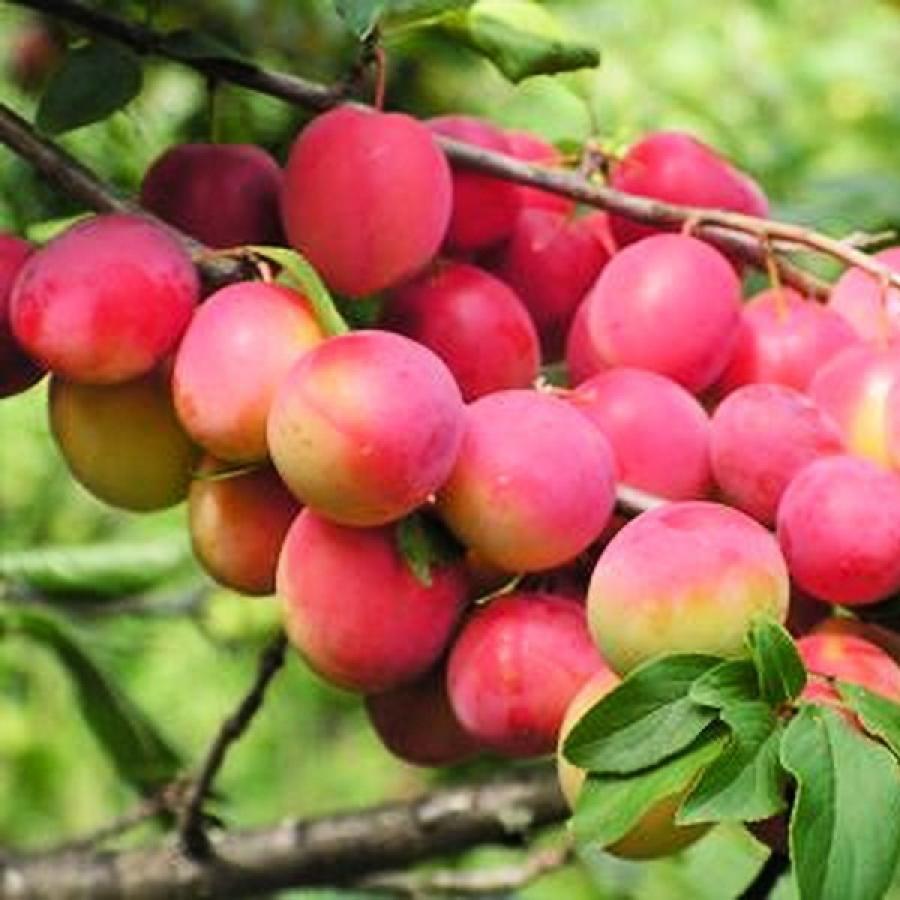
In order for the fruits to grow large and juicy, it is recommended to thin them out at the ripening stage.
Yield
The yield of cherry plum Komet is rich and stable, with an annual increase in the number of fruits harvested. From young trees, from 10 kg of fruits are collected, from older ones - up to 50 kg.
Cherry plum can be harvested 2-3 years after planting, which characterizes it as a fast-growing tree.
Fruit ripening occurs from late July to early August, but it is uneven.First, larger fruits ripen, which are more exposed to the sun's rays. After collecting them, the fruits remaining on the branches ripen.
Plant parameters
The shape of the crown looks like a bowl, this is important for the uniform flow of light and heat to the fruits. As a rule, the colder it is in the growing region, the lower the crown should be located to the ground.
The trunk of the tree is smooth, gray in color. The lateral branches are short, because of this, the plant does not thicken. On short branches, they grow medium-sized, with a glossy surface, elliptical leaves, with a slightly wavy edge and slight serration. The flower buds are round and small in size; when blooming, medium-sized white flowers appear.
Before planting cherry plum on your site, you need to carefully choose a seedling. It is desirable that the age is two years, the height of the tree is about a meter, the root system is closed, developed and fibrous - for better engraftment. The branches of the seedling should bend easily and not break, the wood is slightly greenish.
It is important whether the seedling is grafted or grown from seed. In the vaccinated, a small protrusion is formed at the base of the trunk. A specimen grown from a bone may not have all the characteristics of this type of cherry plum.
Landing
When planting, the composition of the soil can be improved by adding sand to the dug hole (for heavy clay soil that does not allow air and water to pass through); dolomite flour or eggshell powder (for an acidic environment); peat or coniferous sawdust (for alkaline soil).
Do not plant cherry plum in lowlands and in areas with groundwater above 1 m from the soil surface. The following neighbors should be avoided: cherries, cherries, pears, birches, walnuts. Near them the cherry plum feels oppressed.
Planting time is spring (from mid-April to May) and autumn (from late September to early October). The adaptation time for a seedling in the fall takes about two months.
The spacing between seedlings should be at least 3 meters. The hole is dug half a meter deep and about 80 cm in diameter. Drainage is laid out on the bottom - expanded clay. The seedling is buried in mixed soil with humus or specialized fertilizer. After planting, the tree is abundantly watered with warm and settled water in a volume of 25-30 liters and tied to a peg is fixed.
Care
This variety of cherry plum is unpretentious in care. It is enough to weed in time, remove root growth. Watering is rare, but abundant due to the shallow root system not adapted to droughts, from 30 to 50 liters of water per month, depending on the age of the tree. In the summer months, it is worth increasing the amount of water to irrigate.
Complex top dressing with nitrogen and potassium content is applied annually: in spring - with a nitrogen complex, before harvesting for a month - with a potassium-phosphorus composition, in the fall, before wintering, potassium and humus are added to the soil to maintain fertility.
Pruning is carried out in the first three years to form the correct crown, in subsequent years only dry branches are cut for the purpose of preventive thinning.
Before winter, in late autumn, the ground around the plant is loosened, the trunk is whitewashed with a special whitewash, purchased in a specialized store, to the fork of the branches. The cherry plum trunk is wrapped in several layers with a cloth that does not allow air to pass through. A young tree under 5 years old is best wrapped with branches completely.
Advantages and disadvantages of the variety
It is possible to describe for a long time the advantages of the Kubanskaya cherry plum variety over other varieties.
Advantages:
- Frost resistance, early maturity;
- Resistant to most diseases;
- Unpretentiousness to various soils;
- Stability and high yield;
- Delicious and aesthetic fruits.
Disadvantages:
- Uneven ripening of fruits;
- Thinning fruit for good yields.
Cherry plum Kuban comet is valued by gardeners for its relative unpretentiousness, good frost resistance, high yield and excellent fruit taste. The plant is still loved for the fact that it grows equally well alone in the garden, and in groups in the garden area. With proper and proper care, the Kuban comet cherry plum will give a good, stable harvest and will be the best choice for each site.
